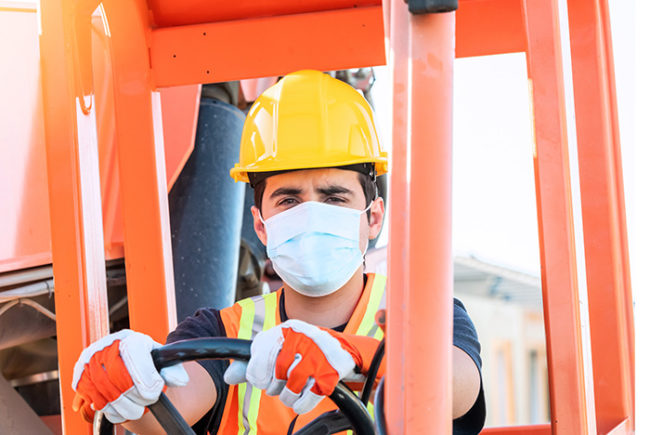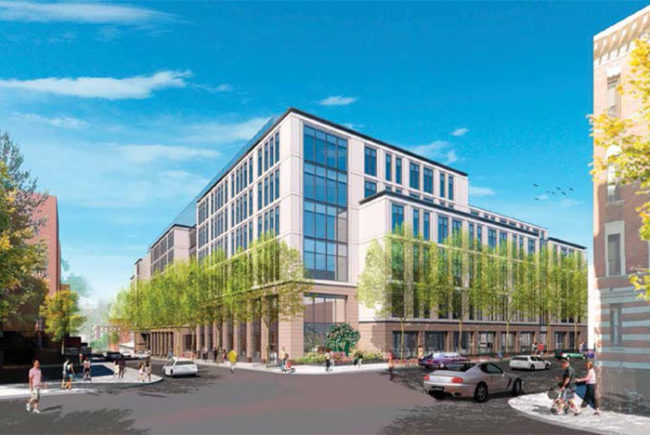Heading into 2022, the health care construction industry faced the daunting challenge of planning for the coming months in the midst of an unstable, unpredictable COVID-19 economy.
Active construction projects forced to shut down when COVID-19 hit in 2020 began bouncing back in 2021 as the country regained some of its footing. Unfortunately, the economy had not yet recovered from the serious blow leveled by COVID-19, creating significant obstacles to getting hospital construction projects back on track.
Labor shortages, supply chain disruptions, rising prices and increased demand are just some of the major challenges facing health care systems across the country, according to Chris Harmon, system director of facilities, construction and renovation at Baptist Memorial Health Care, Memphis, Tenn.
“Construction projects are getting done, but it often means adding time and money,” Harmon says. “The volatile economy has also changed how we assess projects against revenue. Because financial factors are constantly changing, some projects may no longer be feasible.”
According to 2021 data from the Associated General Contractors, the cost of building materials rose nearly 13% from April 2020 to February 2021, but project bids did not reflect the increased cost. Data shows this increase is 10% higher than the average 3% yearly inflation prediction that is usually included in most construction project bids.
Harmon, who oversees 22 hospitals in the Baptist Memorial Health Care system, says capital budgets have been disrupted to the point that many hospitals are essentially playing catch-up with funding projects that were postponed.
For example, a construction project to build a new hybrid operating room (OR) at Baptist Memorial Health Care began with design in December 2019. Construction was slated to start in early 2020. When Harmon was ready to bid the project out, COVID-19 shut it down. The project was pushed to 2021 when supplies and labor were in short availability, driving the cost far beyond the amount initially allocated.
The project price tag jumped from $850,000 to $1.4 million, not including the loss of potential revenue the hybrid OR would have generated if completed on time. Extended by a month, the hybrid OR was planned to open in December 2021, as of press time.
“When we started the fiscal year, we needed to reallocate 2021 dollars to this project,” Harmon says. “There is only so much money in the capital budget each year, so that money has to come from some other project or from contingency funding. Getting back on track is extremely challenging.”
Many building projects are being sidelined by a lack of general laborers who are not returning to the construction market in pre-pandemic numbers, due in part to government compensation under the CARES Act.
A lack of workers has created a shortage of supplies such as wood, hardware and copper, and hospitals are scrambling to find alternatives to products that stopped or significantly scaled back production during COVID-19. Another alternative is paying exorbitant prices to get the supplies they need.
In an already volatile COVID-19 economy, an extreme weather event in Texas last year forced some manufacturers to stop producing polyvinyl chloride, a plastic commonly used in electric utility work, spiking the price by 270% from March 2020 to March 2021.
The impact of the unpredictable economy also is being passed down to subcontractors facing construction supply and labor shortages.
Before the COVID-19 pandemic, a guaranteed 30-day pricing hold for bids barring an unforeseen increase in the cost of materials was common. Now, some subcontractors are drastically reducing the length of pricing holds.
For example, the vendor for a small project underway at Baptist Memorial Health Care who previously guaranteed prices for 90 days decreased the time frame to just five days.
Tighter price holds are one of the factors forcing designers, architects and construction managers to significantly expedite hospital construction projects in an effort to keep projects on schedule as much as possible.
Where does that leave hospitals planning projects for the year ahead? Because the issue comes down to a matter of simple economics, Harmon doesn’t see circumstances improving until the economy recovers from the impact of COVID-19.
“With material supplies depleted and labor shortages continuing, construction cost will continue to rise as the market establishes a new equilibrium price point. Owners will need to continue projecting project cost escalations until the labor crisis is resolved and material supplies are replenished,” Harmon says.





